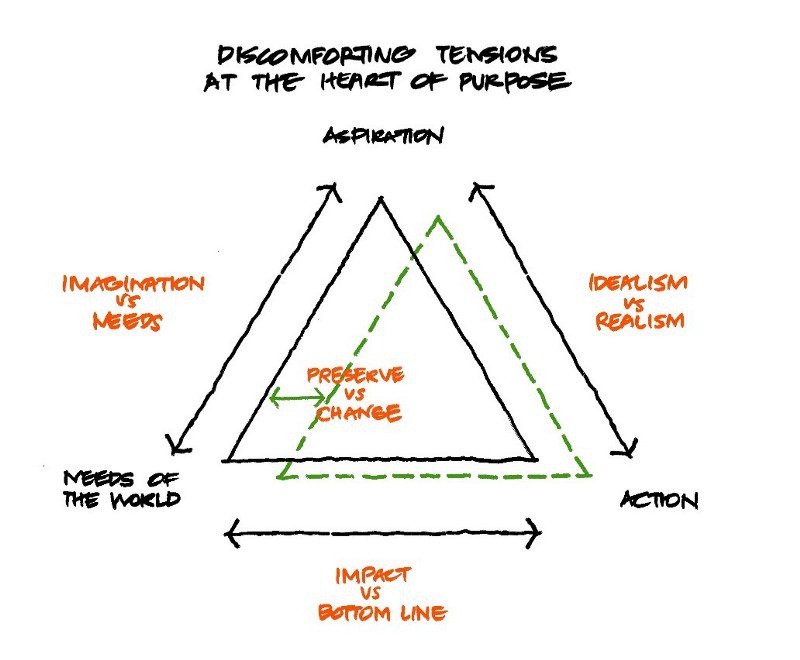Thinking about purpose in business was at one time disruptive — a perspective which reminded companies how disconnected they had become from their raison d’etre, and a provocation to re-articulate it, recommit, and mobilize around it. A seminal HBR article on the topic from 1994 states, “In most corporations today, people no longer know — or even care — what or why their companies are”, and argues, “strategies can engender strong, enduring emotional attachments only when they are embedded in a broader organizational purpose”.[1]Bartlett and Goshal (1994) Changing the role of top management: Beyond strategy to purpose. … Continue reading
What is purpose?
Purpose is developed at the intersection of aspiration, external need, and action. A purpose is an enduring aspiration formed around a need in the world which a company is willing and able to act on, using intrinsic strengths or capabilities it could develop. For example, the world’s oldest company, Japanese construction firm Kongō Gumi, describes its purpose as: “Kongō Gumi constructs shrines and temples that cultivate and bring calmness to your mind”.[2]Kongō Gumi was bought in 2006 by the Takamatsu Construction Group after 1428 years of independence; https://www.takamatsu-cg.co.jp/eng/about/group/takamatsu/kongogumi.html Although its offering has evolved over time and it was recently acquired, it has continued to pursue its purpose of bringing calm to people’s minds since its founding 1440 years ago.

At the heart of the idea of purpose are a number of discomforting tensions (Figure 1). There is the tension between idealism and realism: on the one hand, you want to set forth an ideal that pushes your company to become something greater than it currently is, but on the other hand, you don’t want videos and speeches articulating great aspirations which are grossly mismatched with the intention and capability to act. Reality without ideals takes you nowhere, but ideals without reality are equally fruitless: you end up either ignoring the ideal or pretending you are already living it.


